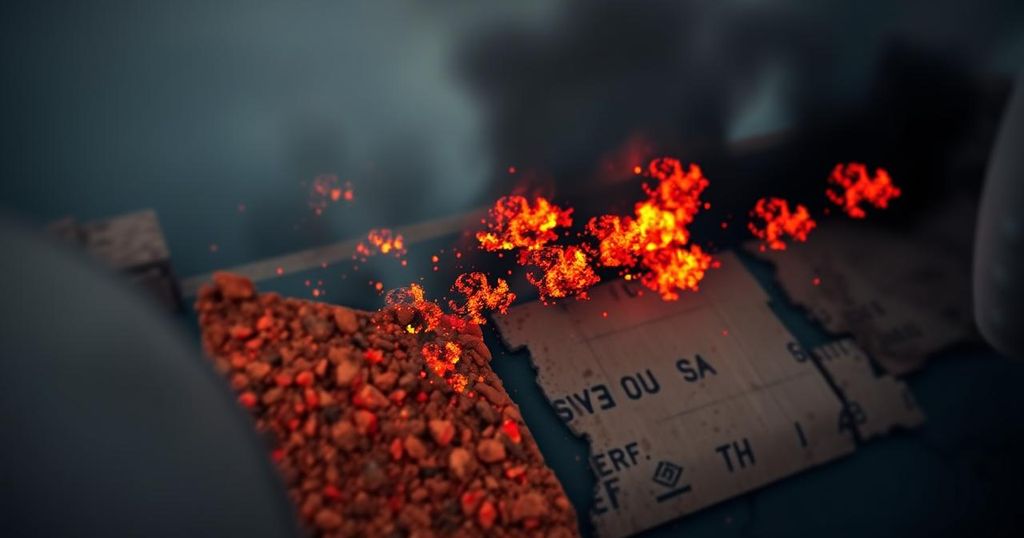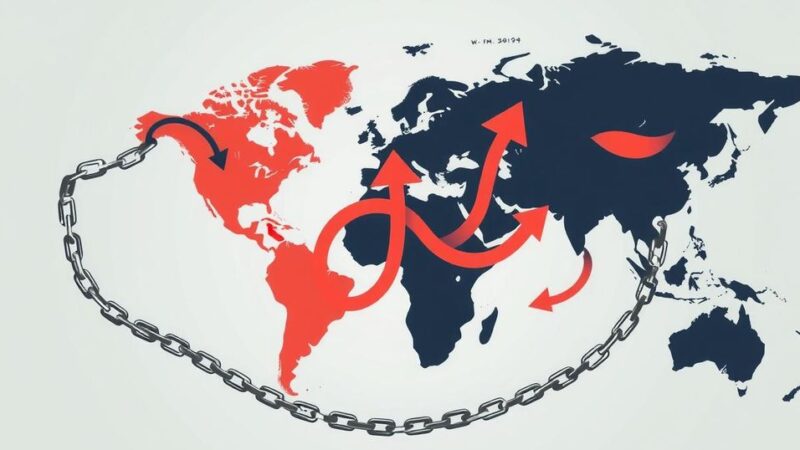Iran-linked militias in Iraq have significantly intensified their attacks on Israel, launching about 40 assaults in two weeks, amidst the backdrop of Hezbollah’s vulnerability and the ongoing Gaza conflict. The escalation follows the assassination of Hezbollah leader Hassan Nasrallah by Israel. Analysts indicate that these actions reflect Iran’s strategy of employing lesser proxies while competing with established groups in its network. The situation continues to evolve as Israel intensifies its military responses against these Iran-affiliated factions in Syria.
In recent weeks, Iranian-affiliated militias in Iraq have dramatically escalated their attacks against Israel, launching approximately 40 missile, drone, or rocket assaults over two weeks. This surge in hostilities aligns with a broader clandestine war across the Middle East, significantly influenced by events dating back to October 2022 when the conflict in Gaza reignited. Data from the Washington Institute indicates a sharp increase in these attacks following the Israeli airstrike that killed Hezbollah leader Hassan Nasrallah on 27 September 2023. Hezbollah, established with Iranian support over four decades ago in Lebanon, is central to the coalition of militant groups Iran has cultivated throughout the region. The current situation is exacerbated by Hamas’s frail condition after enduring a prolonged conflict in Gaza and Hezbollah’s vulnerability amidst sustained Israeli operations in Lebanon. In response, Iran appears to be leveraging lesser-known proxies within its network to stage offensive operations against Israel, thereby demonstrating continued support for Hezbollah. Michael Knights, an analyst at the Washington Institute, remarked, “The number of missiles and drones being fired from Iraq [at Israel] has gone through the roof. They’ve moved into a higher gear to demonstrate their support for Hezbollah.” Furthermore, he noted that while these militias lack the capabilities of Hezbollah, there is a competitive drive among Iran’s proxies to showcase their efficacy against their common adversary. Iranian proxies across Syria, Iraq, and Yemen have increasingly become focal points for Israeli military considerations in retaliation to threats, particularly those posed by the ballistic missile attacks targeting Israel on 1 October 2023. Israel has responded with numerous airstrikes in Syria, focusing on Iranian-backed militant factions that facilitate logistical support to Hezbollah. Recent operations included significant strikes against strategic sites in Syria, which included an industrial complex in Homs and military installations near Damascus. The Israeli military’s intensification of operations follows a series of retaliations and saboteur actions that have reportedly caused significant disarray among Hezbollah’s communication networks, as referenced by Kirsten Fontenrose from the Atlantic Council, who characterized these incidents as pivotal in unveiling the intricate relationships and operational reach of Hezbollah and its affiliates. Significantly, although Israel has not directly targeted Iraqi Iran-backed militias, it has engaged in operations against them in Syria. The Islamic Resistance of Iraq (IRI), which has been involved in claims against Israel and US forces, has emerged as a notable actor in the ongoing strife. As the geopolitical landscape continues to shift, the interplay between Iranian proxies and Israeli counteractions reminds analysts that “Every big war has its forgotten corners,” highlighting the often-overlooked dimensions of regional conflicts that exert substantial strategic consequences.
The text outlines the rising tensions in the Middle East, particularly focusing on the increased hostilities launched by Iran-linked militias in Iraq against Israel. This pattern of aggression has historical roots that date back to the beginning of the Gaza conflict in 2022. The dynamics between Iran’s regional proxies and the Israeli military response have been pivotal in shaping the current security landscape in the region. Key actors, including Hezbollah and the various militias under Iran’s influence, demonstrate a complex web of alliances and rivalries that complicate the regional conflict further. The analysis emphasizes the escalating nature of attacks and the strategic rationale behind Iran’s use of various regional factions to counter Israeli operations.
In conclusion, the recent surge of attacks by Iranian-affiliated militias in Iraq on Israel highlights the evolving dynamics of regional conflict. As Iran shifts its focus to its junior proxies in light of Hezbollah’s precarious situation and Hamas’s weakening, the continued retaliatory actions by Israel underscore an ongoing cycle of violence. The interconnected reality of militia activities across Syria, Iraq, and Yemen further complicates the landscape, with potential implications for international security and regional stability. The situation calls for heightened attention and careful analysis as the alignment of political and military strategies evolves among these competing factions.
Original Source: www.theguardian.com







